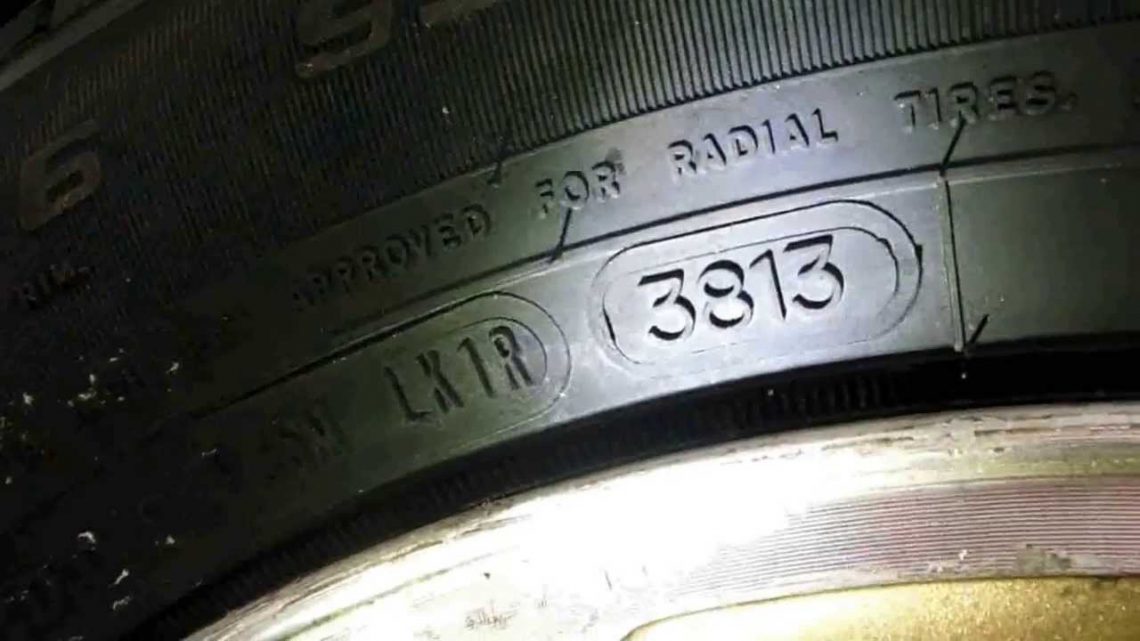Maintenance and Tech, Motorcycles
Kyle Smith
05 November 2021
Share
Kyle SmithOf all the parts of your car that deteriorate from literally existing, tires are the most talked about. Ask a dozen folks at your cars-and-coffee group about tire age and you’ll somehow get 14 differing opinions about how seriously to take the aging of the rubber that connects your car to the road. It’s a legit safety concern, but generally the discussion will boil down to someone citing “something they heard from a friend a while back.” Luckily, Ari Henning took a deeper dive into answering the question—and he even put his body on the line to find out.
This video was distinctly aimed at motorcycles, but there is a point at which tires are tires, and all our vintage cars have tires that get used about as much as most motorcycles. That means we should really look at this research and study it to glean a bit about our rubber too, and there’s plenty to learn.
The most common thought—and even I am guilty of this—is that tires should be replaced after five years even if they still have tread and appear serviceable. Ari asks the hard question, though: Is that a myth put out by the tire manufacturers to sell more tires, or simply a misunderstanding?
To resolve the first part of that question, he called some tire manufacturers and asked. The short answer is that it’s not that simple. Tires do age, but because that aging is due to a myriad of factors and is a safety concern, tire replacement guidelines rightfully fall on the conservative side. Five years, however, is a little too conservative. Only one producer, Avon, recommended anything close: seven years. Other brands—Bridgestone, Michelin, Dunlop, and Continental—agree that 10 years is the maximum lifespan for a properly maintained set of tires.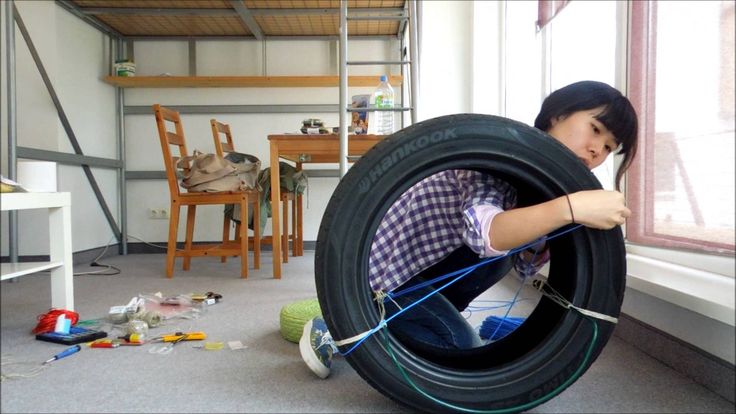 That seems like a crazy number, but Ari decided to put his money where his motorcycle is. He found a 7-year-old set of Bridgestone RS10 tires, mounted them on the wheels of a GSXR1000 track bike, and put them to the test to see if it they would stick or slide.
That seems like a crazy number, but Ari decided to put his money where his motorcycle is. He found a 7-year-old set of Bridgestone RS10 tires, mounted them on the wheels of a GSXR1000 track bike, and put them to the test to see if it they would stick or slide.
Surprisingly, not only did his bike stay upright, but the “ancient” tires had enough grip to keep a pace similar to that of a brand new set. It’s not surprising. Why? Mainly because those old tires were stored properly. Here are some storage tips not just for motorcycle tires, but for your car’s tires as well.
Tires should be kept in a cool place. Heat makes the oil in the rubber compound rise out, and thus makes them turn rock hard faster.
Oxygen is necessary for life, but it also can kill a lot of things we hold dear—tires included. The elastomer molecules in tire rubber compounds get harder and weaker when exposed to oxygen. Sadly, there’s not a lot we can do here short of putting our tires in a nitrogen-filled bubble.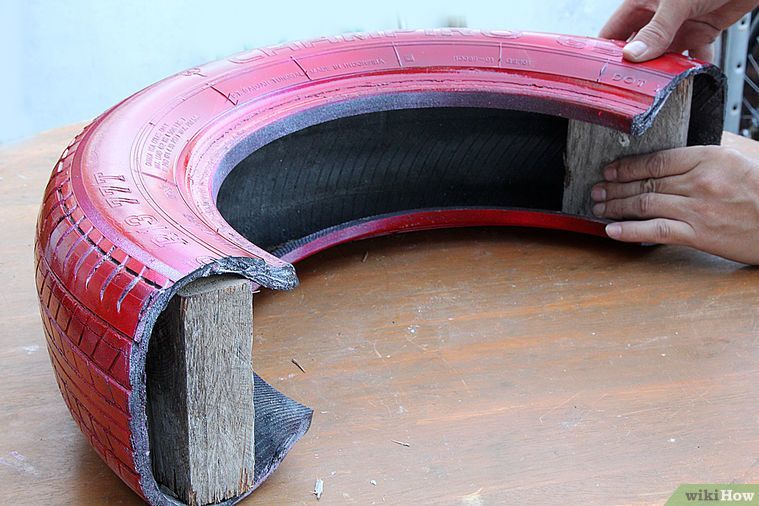
Ultraviolet exposure also serves to degrade tires, and thus the best storage solutions are out of the sun. If necessary, resort to a black trash bag. There’s a reason you see long-parked RVs or trailers with tire covers. It really does help.
A byproduct of combustion or oxygen being exposed to electrical current, ozone is the leading cause of dry rot in tires. That means storing tires in your workshop might be the worst place, compared to a crawlspace or basement (assuming there are no appliances in that basement.)
Mechanical stress is just a fancy way of saying carcass flex. It’s unavoidable when a tire is mounted and in use, but when storing a tire—like your winter tires or a spare set—it is best to not stack them, as that puts additional stress on the one at the bottom.
There is nothing you can do to completely halt a tire from aging, but with a little careful attention you can maximize the life of your tires and get the full long life they deserve.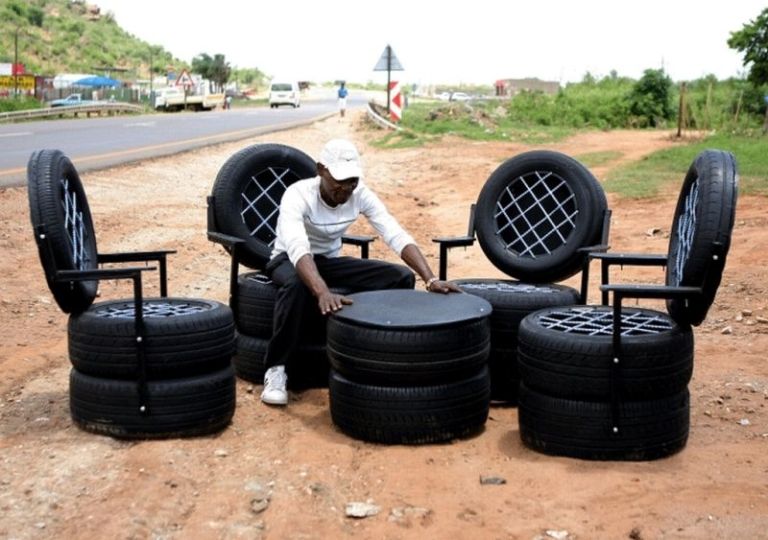 After all, it is a good bit longer than any of us thought.
After all, it is a good bit longer than any of us thought.
It may be tentative, but tires do have an expiration date. There is a general consensus that most tires should be inspected, if not replaced, at about six years and should be absolutely be swapped out after 10 years, regardless of how much tread they have left. How do you know how old your tires are? There’s a code on the sidewall that you can read about here. Wear is a far more straightforward consideration: Tiremakers and safety advocates say a tire is worn out when its tread depth reaches 2/32 of an inch. That’s all fine, but what most car owners want to know is how long to expect a set of new tires to last before they need to be replaced.
“I wish it were simple to say how long each tire might last, but tires are different,” said Dan Zielinski, a spokesman for the U.S. Tire Manufacturers Association (USTMA). “Some tire manufacturers offer a warranty as high as 80,000 miles or more, reflecting confidence in that particular product’s longevity based on its engineering, technology, and design.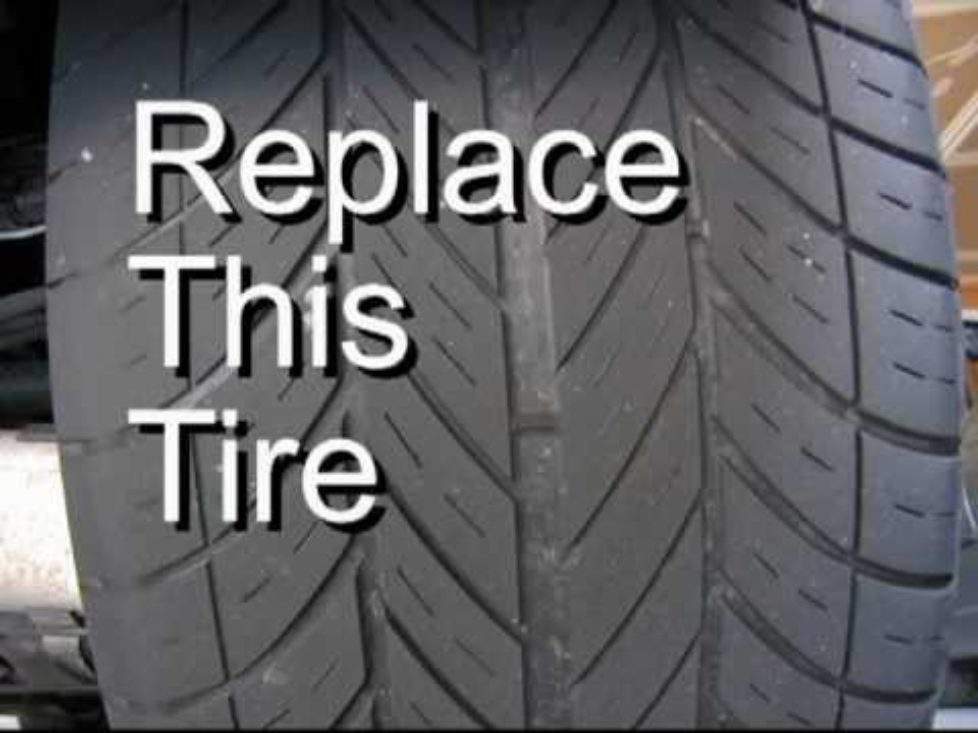 Other tires may be built to provide 30,000 miles of service.” Or less; some high-performance tires on cars driven aggressively will be worn to the 2/32-inch point without ever seeing 15,000 miles, but those are extreme cases.
Other tires may be built to provide 30,000 miles of service.” Or less; some high-performance tires on cars driven aggressively will be worn to the 2/32-inch point without ever seeing 15,000 miles, but those are extreme cases.
The average American drives between 14,000 and 15,000 miles a year, according to data from the Federal Highway Administration. Zielinski said that, if you’re kind to your tires—that is, you aren’t constantly peeling out at stoplights and you properly maintain them—most new tires on the market today will last about 60,000 miles. For what it’s worth, the USTMA did a review of several thousand recently scrapped tires and found that most were three to four years old. There was no way of telling how many miles were on those tires, but it’s easy enough to multiply four years by 15,000 miles annually to confirm the rough approximation of tire durability.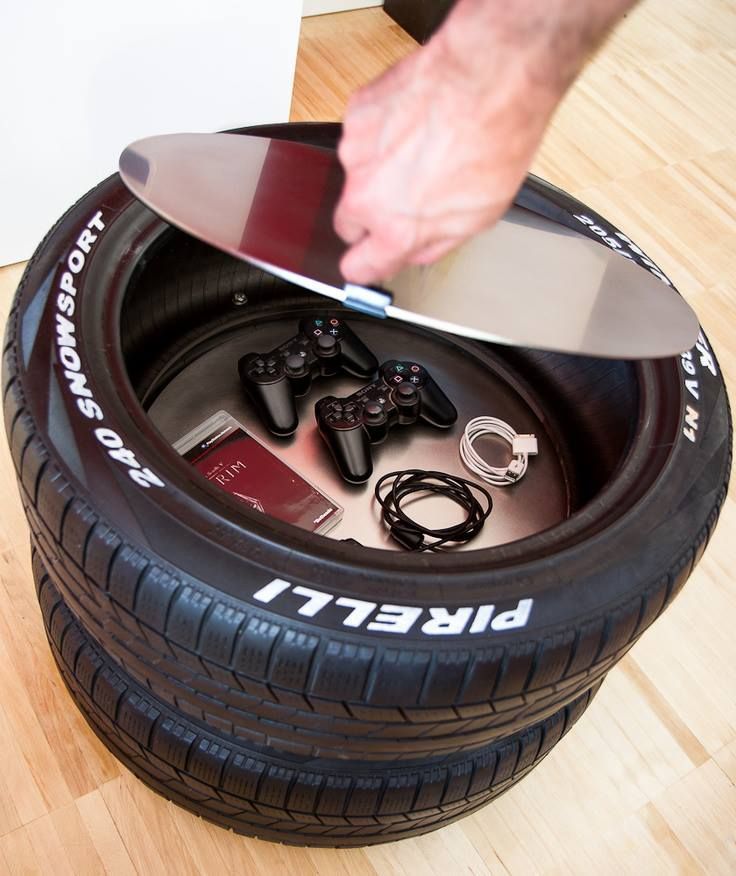
If you want to figure out how soon you’ll wear out the tires on your car, Zielinski said it would be a good idea to start by determining how many miles you drive each year. Divide the number of miles on the odometer by how many years you’ve owned the car (starting, obviously, from when you first got the car and accounting for any mileage it had on it at that time). Then you can compare that with any advertised warranty on the make and model of the tires and figure out how many years of service to expect. If you live where winter tires are advisable and swap those onto the car for some months of the year, your regular tires will get less use and will endure for a longer period of time, but remember the caveats about tire age.
Zielinski also noted that if you hit the wear bars at 50,000 miles on a set of tires with a 60,000-mile warranty, for example, tiremakers that offer such coverage will typically prorate the price of a new set. In this example, you could expect a discount on the new set equal to one-sixth their price, or about 17 percent.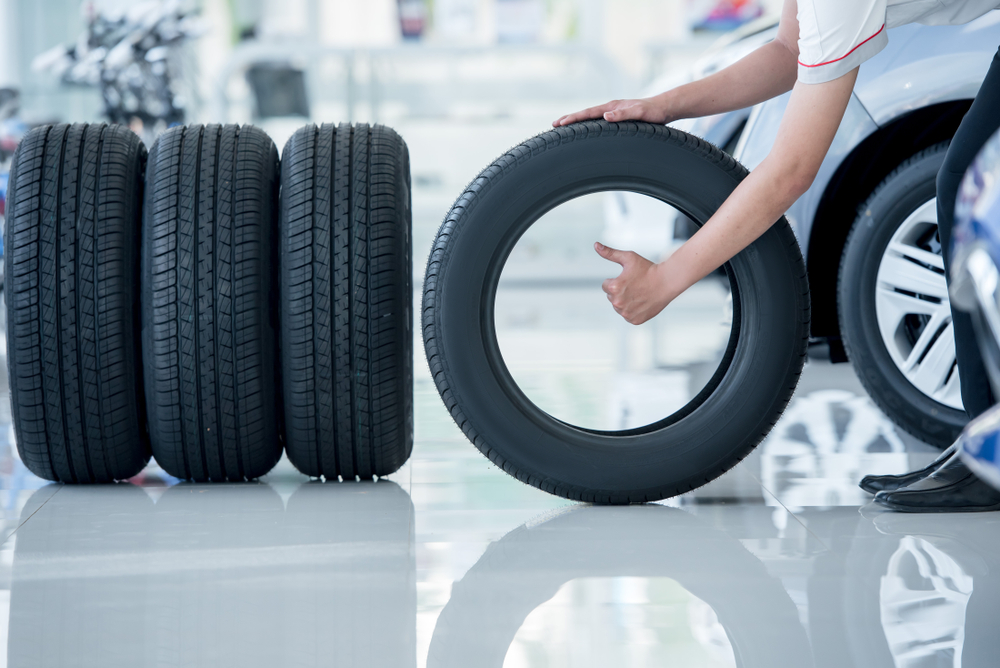 You might not get it, though, if you decide to change brands.
You might not get it, though, if you decide to change brands.
Kypros/Getty Images
In general, the best way to preserve the life of your tires, and keep yourself and your passengers safe, is to maintain them properly. Here are some tire basics and maintenance tips:
Tread
A tire is considered unsafe, and should be changed, once its tread is worn down to 2/32 of an inch, according to the National Highway Traffic Safety Administration (NHTSA). Many tires have tread-wear indicators, which are little bars in the tread that show when the tire is worn down to replacement level. These will start making noise to alert the driver that they need attention. You can also use a penny: NHTSA recommends putting the penny in the tread with Abraham Lincoln’s head upside down and facing toward you. If you can see the top of Abe’s head, it’s time for new tires.
Pressure
To ensure even wear, tiremakers and auto companies recommend that vehicle owners check their tire pressures monthly. The pressure should be at the vehicle manufacturer’s recommended level, which is usually found in the car or truck’s doorjamb or in the owner’s manual. One quick and easy way to check tire pressure is with a handheld tire-pressure gauge, which you can find starting around $10 at an auto-parts store. Tire shops will often check the pressure for you. Some gas stations have digital readouts as part of their air pumps; these are not always accurate, though. It’s best to check the pressures when the tires are cold, meaning that they have not been driven on for several hours. So you’re better off checking them at home after the car has been parked overnight.
The pressure should be at the vehicle manufacturer’s recommended level, which is usually found in the car or truck’s doorjamb or in the owner’s manual. One quick and easy way to check tire pressure is with a handheld tire-pressure gauge, which you can find starting around $10 at an auto-parts store. Tire shops will often check the pressure for you. Some gas stations have digital readouts as part of their air pumps; these are not always accurate, though. It’s best to check the pressures when the tires are cold, meaning that they have not been driven on for several hours. So you’re better off checking them at home after the car has been parked overnight.
Balance and Alignment
Tires need to be round, and the tire/wheel combination needs to be balanced. Tire shops and mechanics will use a balance machine, which spins the wheel to see where high and low spots are and detects any imbalance. The tire shop will then add weights, which are hammered onto the wheel, to balance them.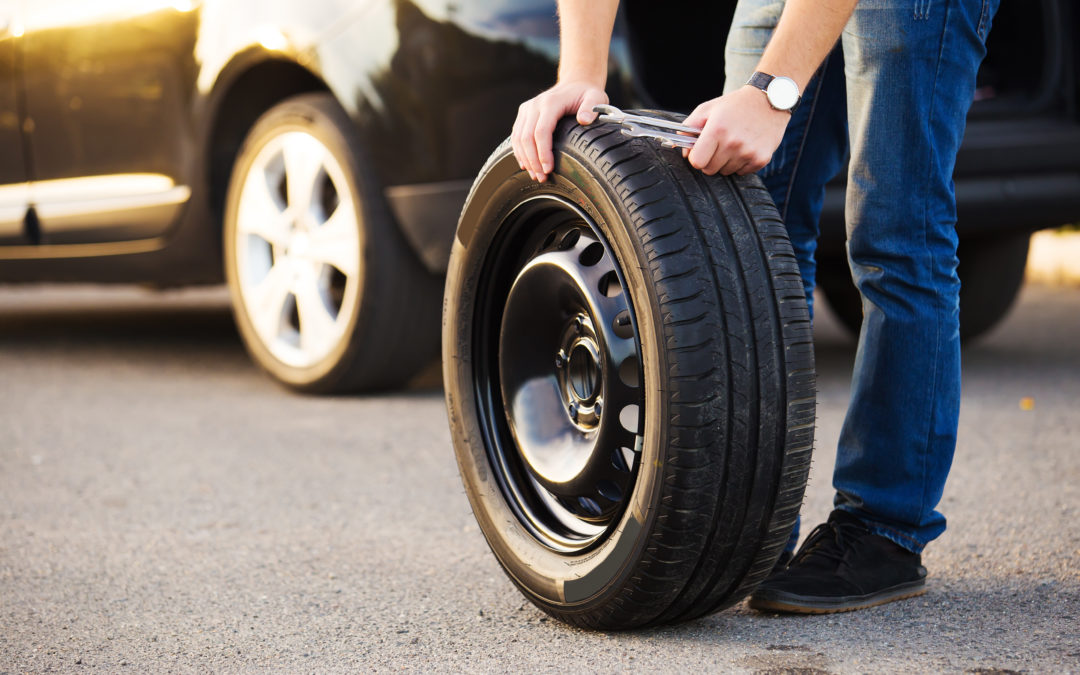 These shops can also make make sure your wheels are aligned to keep the car tracking straight, which also reduces tire wear.
These shops can also make make sure your wheels are aligned to keep the car tracking straight, which also reduces tire wear.
Rotation
Rotating your tires can help prolong their lives. For front-wheel-drive vehicles, the tires in the front will wear more quickly and can be swapped with the rear ones. The inverse is true for rear-wheel-drive cars and trucks. All-wheel-drive models, too, may need rotation. Most owner’s manuals contain a recommended pattern for rotating tires to spread the wear evenly. The USTMA recommends tires be rotated every 5000 to 8000 miles.
This content is imported from OpenWeb. You may be able to find the same content in another format, or you may be able to find more information, at their web site.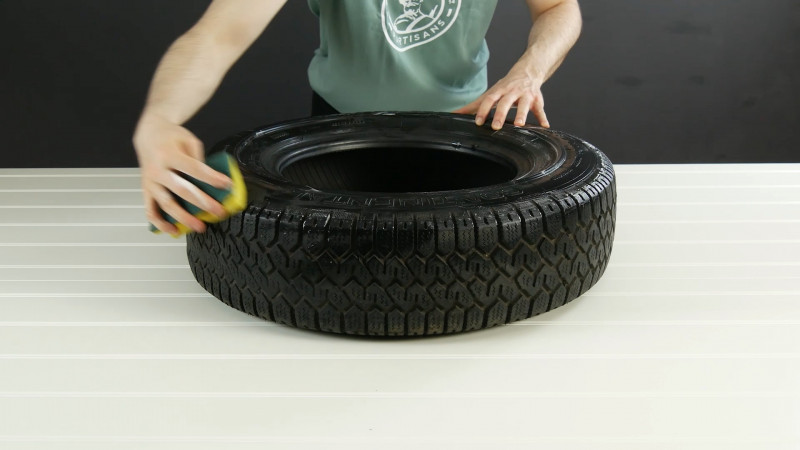
Clever marketers caught motorists on the hook of "fresh tires". A well-created myth about the high quality of rubber “straight from the oven” fuels the interest of drivers. Tires that have been in the warehouse for a year or two are already considered old, and therefore are not in demand. Is there a grain of logic and justice in such a position?
The popularity of fresh rubber is on the rise amid the tire giants' secrecy about tire aging. It is quite difficult to draw the line between "youth" and "old age" of a tire, since the driving style, climatic conditions, and intensity of use affect the condition of the rubber. The fact plays into the hands of manufacturers that during active use, tires wear out faster than the warranty aging moment comes. Consequently, it is difficult for motorists to name the moment when exactly the rubber enters retirement age.
Scientists have tested that tires age due to the penetration of ozone gas contained in the atmosphere into the pores of the rubber. In this case, sulfur compounds are destroyed between the rubber molecules, and the tire becomes less elastic. If the rubber has been stored and not used, the product becomes brittle and hard, and the rubber mass molecules “crumble”.
In this case, sulfur compounds are destroyed between the rubber molecules, and the tire becomes less elastic. If the rubber has been stored and not used, the product becomes brittle and hard, and the rubber mass molecules “crumble”.
It has been theoretically established and practically confirmed that wheels older than 7-8 years are potentially dangerous. Analysts of the expert company Dekra say: if tires have been in the seller’s warehouse for more than 7 years before buying, the risk of getting into an accident with them increases. An analysis of severe road accidents proved that all of them involved cars with dinosaur tires under the age of 12 years. It is impossible to operate such wheels, since the rubber dries out, and microcracks appear on the surface, threatening to turn into breaks and through side holes. Signs of aging will also affect tire performance in winter and wet performance.
It is believed that from the moment of production, the tire can be stored in the seller's warehouse for five years, and after another five years it can be safely used.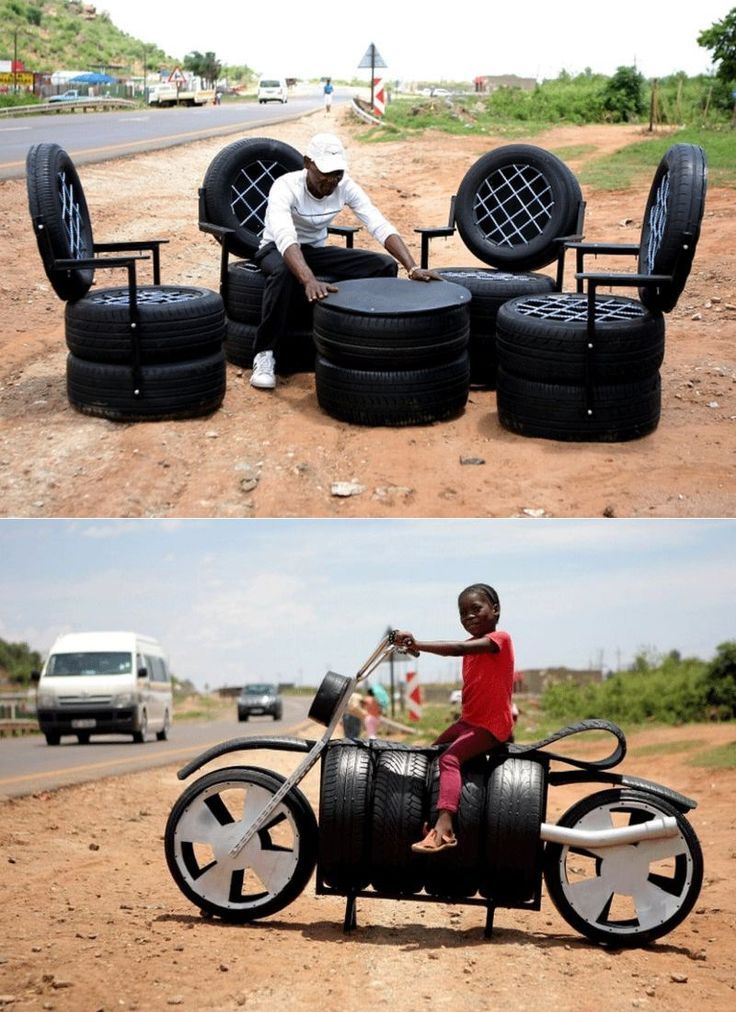 Despite the fact that many manufacturers prescribe tires for up to 10 years of life, it is difficult to find such mastodons in stores: this is the lot of flea markets. Such conclusions are made by American scientists, but it is not worth comparing the quality of Ukrainian and American roads, and therefore it is better to approach such “authoritative” statements with a healthy dose of skepticism. German experts, for example, limit the shelf life of new tires to 6 years, and specialists from Continental even advise changing tires after four seasons. Russian certification authorities for pneumatic tires allocate a five-year warranty period for the tire, starting from the date of manufacture. It is not surprising that car service employees recommend that after the expiration date (on average 5-6 years), even those tires that have been used little or have lain idle are changed.
Despite the fact that many manufacturers prescribe tires for up to 10 years of life, it is difficult to find such mastodons in stores: this is the lot of flea markets. Such conclusions are made by American scientists, but it is not worth comparing the quality of Ukrainian and American roads, and therefore it is better to approach such “authoritative” statements with a healthy dose of skepticism. German experts, for example, limit the shelf life of new tires to 6 years, and specialists from Continental even advise changing tires after four seasons. Russian certification authorities for pneumatic tires allocate a five-year warranty period for the tire, starting from the date of manufacture. It is not surprising that car service employees recommend that after the expiration date (on average 5-6 years), even those tires that have been used little or have lain idle are changed.
If everything is very clear with wheels of critical age, then what about middle-aged tires? How efficiently can rubber produced 4-6 years ago be used? The French giant Michelin offers its guarantee of durability and reliability, claiming that its tires can last up to ten years if the tires are ridden under normal conditions throughout their life.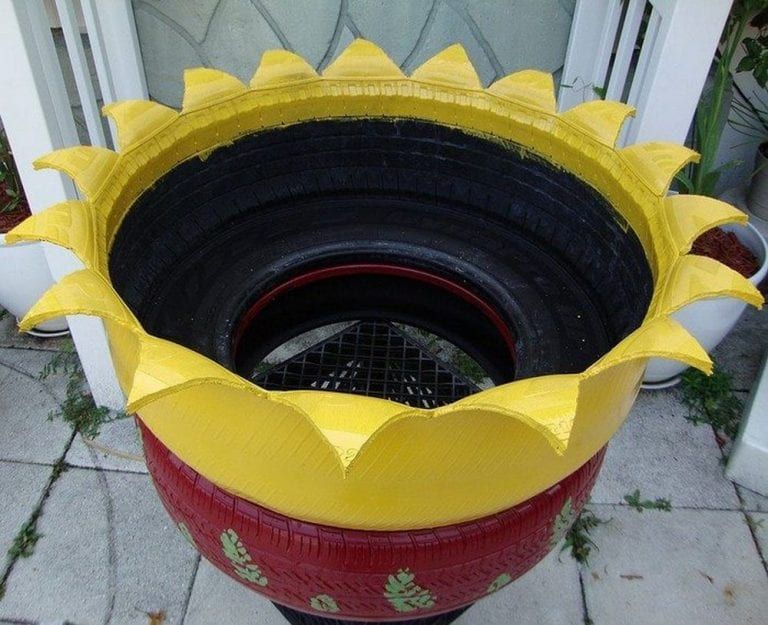 So, constant exposure to rubber activates special softeners in it, which block the appearance of cracks and hardening. Drivers have the right to be wary of such assurances, since other manufacturers refrain from commenting on this at all. We can conclude: if a tire manufactured 4-5 years ago entered constant intensive operation, it will boldly “stretch” on the road for another five years; if a five-, six-year-old tire is used occasionally, its warranty period has expired and the tire needs to be replaced.
So, constant exposure to rubber activates special softeners in it, which block the appearance of cracks and hardening. Drivers have the right to be wary of such assurances, since other manufacturers refrain from commenting on this at all. We can conclude: if a tire manufactured 4-5 years ago entered constant intensive operation, it will boldly “stretch” on the road for another five years; if a five-, six-year-old tire is used occasionally, its warranty period has expired and the tire needs to be replaced.
Experts give their own estimates of tire durability:
 Among other things, some drivers note that innovative imported tires in domestic stores get only a year or two after the world "debut" or in the year of release, but in limited quantities;
Among other things, some drivers note that innovative imported tires in domestic stores get only a year or two after the world "debut" or in the year of release, but in limited quantities; Since theorists and practitioners agree only on the dangers of new rubber older than 6-8 years, all tires up to this age can be considered safe. Due to the peculiarities of the market, many stores offer their customers wheels no older than 3-4 years, considering this the optimal period for storing wheels without further loss of functionality.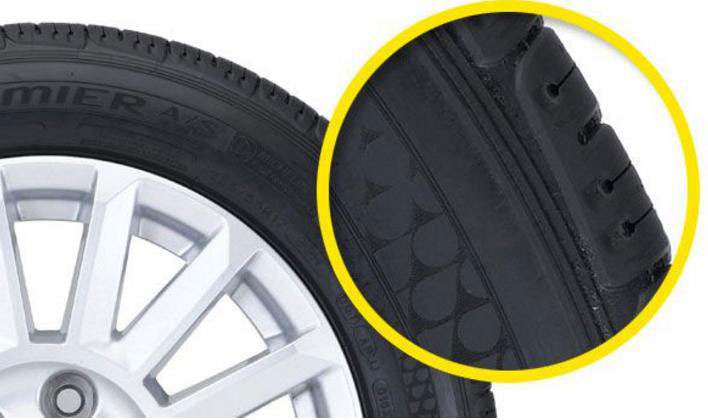 The choice is up to the drivers.
The choice is up to the drivers.
Legitimate questions. Let's try to figure out if we are doing the right thing when we buy a tire that is not “super fresh”, and what can happen to it in general between leaving the assembly line and before installing it on a car. First, let's turn to the official documentation, namely:
GOST 4754-97 (Group L62, INTERSTATE STANDARD) Specifications.
Paragraph 10 of this state standard states the following:
10. Manufacturer's Warranty
10.1 Tire warranty period - 5 years from the date of manufacture. The possibility of further operation of the tire is determined by the consumer in accordance with its technical condition.
Warranty service life of off-road tires and trucks 5.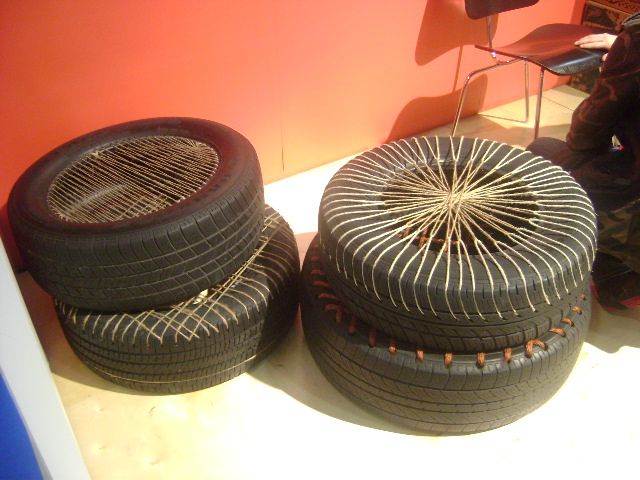 90-13С, 215/90-15С, 215/80R16C, 6.50-16С with off-road tread patterns and universal for the Ministry of Defense - 10 years from the date of manufacture.
90-13С, 215/90-15С, 215/80R16C, 6.50-16С with off-road tread patterns and universal for the Ministry of Defense - 10 years from the date of manufacture.
In accordance with paragraph 5.3 of this GOST on marking, on the side surface, among others, the date of production is indicated, it is an oval-shaped stamp in which four digits are applied (three digits were previously indicated), the first two of them determine the number of the week of manufacture , the second - the year of manufacture.
For example, we come to the store to buy summer tires. Having chosen the tires that are suitable for us in size, we carefully examine the wheel.
Date of manufacture of tires 2211 - May 2011 , the wheel is almost four years old should I take it or not?!
If the surface is smooth, without cracks, of a uniform black color, then we go with this wheel to a tire service, and preferably one located right next to it. With the help of a tire fitter, we put the wheel on the disk, balancing.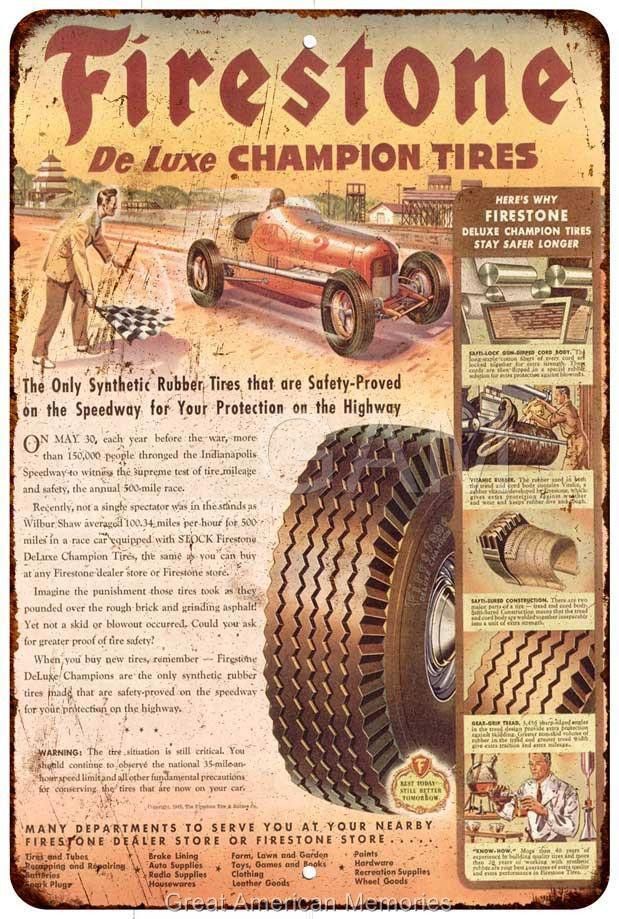 If problems arise during the tire fitting process - the wheel is not balanced, hits, or there are any difficulties with installing it on the disk, the tire fitter will immediately inform you about this.
If problems arise during the tire fitting process - the wheel is not balanced, hits, or there are any difficulties with installing it on the disk, the tire fitter will immediately inform you about this.
It is possible that the wheel originally had a manufacturing defect, although to be honest, this happens extremely rarely, or, more often, the wheel was not properly stored. In this case, the tire must be returned to the store, or replaced with a similar one. Experts estimate that the share of defective summer/winter tires or tires with defects caused by improper storage or transportation conditions is much less than one percent. Buying summer, winter or all-season tires from proven, reliable sellers and changing clothes in a quality tire shop, you significantly reduce these risks.
The summer season is over, you change tires for winter, and leave summer tires until the next change of shoes. Next year, when it's time to put them back on, the tires will be almost five years old.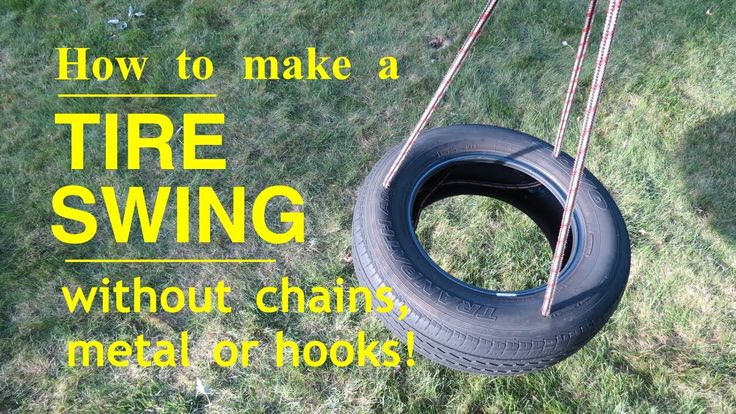 And as the same GOST 4754-97 says, the possibility of long-range operation is determined by the consumer himself. That is, taking out the tires, you should carefully examine them. One of the signs of rubber aging is a change in the color of the rubber compound, as if such a whitish coating appears on it, and small cracks on the sidewall or tread surface. If you don't find anything like that, you should check the tread depth.
And as the same GOST 4754-97 says, the possibility of long-range operation is determined by the consumer himself. That is, taking out the tires, you should carefully examine them. One of the signs of rubber aging is a change in the color of the rubber compound, as if such a whitish coating appears on it, and small cracks on the sidewall or tread surface. If you don't find anything like that, you should check the tread depth.
Since January of this year, a new Technical Regulation has been established, which establishes the following standards for the residual tread height - for summer tires 1.6 mm, for winter tires - 4.0 mm. So, everyone checked, the appearance and height of the tread correspond to the norms, which means that you can change them. And now, every season you will independently evaluate the possibility of using this set of summer tires, as required by the State Standard.
In conclusion, a couple of small comments.
Can I buy tires that are older than five years old?
According to GOST 4754-97, , five years is a WARRANTY tire life , that is, if other certain conditions are met, you can make a claim to the manufacturer if a factory defect is detected. And the service life can be much longer with proper storage and use of tires.
And the service life can be much longer with proper storage and use of tires.
Therefore, if you are offered a tire older than five years in a store, you should not immediately run away from the store. Inspect the wheel, if you do not reveal external signs of aging and the wheel balances normally, you will be able to use it for more than one season.
Clever marketers caught motorists on the hook of "fresh tires". A well-created myth about the high quality of rubber “straight from the oven” fuels the interest of drivers. Tires that have been in the warehouse for a year or two are already considered old, and therefore are not in demand. Is there a grain of logic and justice in such a position?
The popularity of fresh rubber is on the rise amid the tire giants' secrecy about tire aging. It is quite difficult to draw the line between "youth" and "old age" of a tire, since the driving style, climatic conditions, and intensity of use affect the condition of the rubber. The fact plays into the hands of manufacturers that during active use, tires wear out faster than the warranty aging moment comes. Consequently, it is difficult for motorists to name the moment when exactly the rubber enters retirement age.
The fact plays into the hands of manufacturers that during active use, tires wear out faster than the warranty aging moment comes. Consequently, it is difficult for motorists to name the moment when exactly the rubber enters retirement age.
Scientists have tested that tires age due to the penetration of ozone gas contained in the atmosphere into the pores of the rubber. In this case, sulfur compounds are destroyed between the rubber molecules, and the tire becomes less elastic. If the rubber has been stored and not used, the product becomes brittle and hard, and the rubber mass molecules “crumble”.
It has been theoretically established and practically confirmed that wheels older than 7-8 years are potentially dangerous. Analysts of the expert company Dekra say: if tires have been in the seller’s warehouse for more than 7 years before buying, the risk of getting into an accident with them increases. An analysis of severe road accidents proved that all of them involved cars with dinosaur tires under the age of 12 years.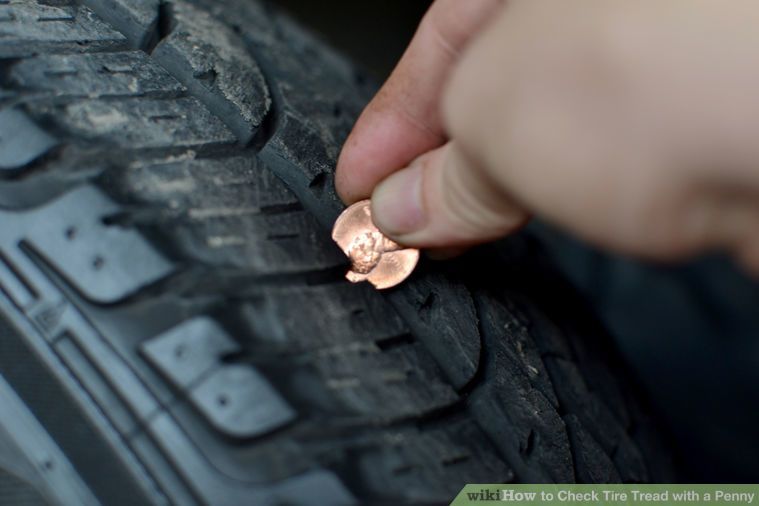 It is impossible to operate such wheels, since the rubber dries out, and microcracks appear on the surface, threatening to turn into breaks and through side holes. Signs of aging will also affect tire performance in winter and wet performance.
It is impossible to operate such wheels, since the rubber dries out, and microcracks appear on the surface, threatening to turn into breaks and through side holes. Signs of aging will also affect tire performance in winter and wet performance.
It is believed that from the moment of production, the tire can be stored in the seller's warehouse for five years, and after another five years it can be safely used. Despite the fact that many manufacturers prescribe tires for up to 10 years of life, it is difficult to find such mastodons in stores: this is the lot of flea markets. Such conclusions are made by American scientists, but it is not worth comparing the quality of Ukrainian and American roads, and therefore it is better to approach such “authoritative” statements with a healthy dose of skepticism. German experts, for example, limit the shelf life of new tires to 6 years, and specialists from Continental even advise changing tires after four seasons. Russian certification authorities for pneumatic tires allocate a five-year warranty period for the tire, starting from the date of manufacture.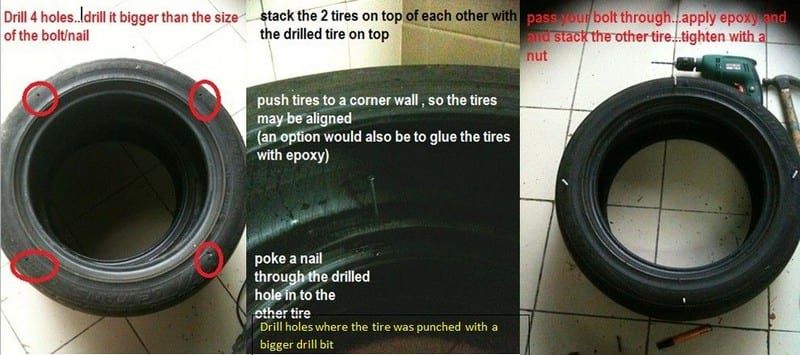 It is not surprising that car service employees recommend that after the expiration date (on average 5-6 years), even those tires that have been used little or have lain idle are changed.
It is not surprising that car service employees recommend that after the expiration date (on average 5-6 years), even those tires that have been used little or have lain idle are changed.
If everything is very clear with wheels of critical age, then what about middle-aged tires? How efficiently can rubber produced 4-6 years ago be used? The French giant Michelin offers its guarantee of durability and reliability, claiming that its tires can last up to ten years if the tires are ridden under normal conditions throughout their life. So, constant exposure to rubber activates special softeners in it, which block the appearance of cracks and hardening. Drivers have the right to be wary of such assurances, since other manufacturers refrain from commenting on this at all. We can conclude: if a tire manufactured 4-5 years ago entered constant intensive operation, it will boldly “stretch” on the road for another five years; if a five-, six-year-old tire is used occasionally, its warranty period has expired and the tire needs to be replaced.
Experts give their own estimates of tire durability:
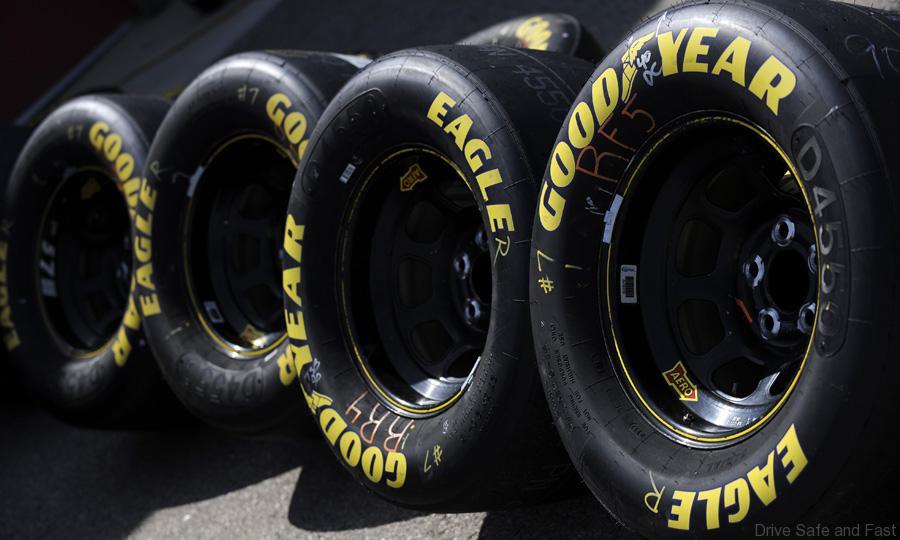
Since theorists and practitioners agree only on the dangers of new rubber older than 6-8 years, all tires up to this age can be considered safe. Due to the peculiarities of the market, many stores offer their customers wheels no older than 3-4 years, considering this the optimal period for storing wheels without further loss of functionality. The choice is up to the drivers.
The desire to reduce the cost of "shoes" of his "iron horse" leads to the fact that a car enthusiast chooses cheaper car tires - from fakes of unknown brands to used tires. The main thing is that the condition of the tread meets the requirements of traffic rules. At the same time, car tires are clearly not something to save on, because by reducing the cost of them, we seriously risk our own health and even life.
Before you decide to buy car tires "with age", used or even brand new, but kept in stock for ten years, think about their role in ensuring the reliability and safety of driving.
As you know, car tires are made of rubber. Automobile rubber is a rather complex combination of chemical elements that are very stable, but by no means protected from external factors. The sun's rays, air, temperature changes slowly but surely decompose rubber into chemical elements, weakening the bonds between them.
Recall that rubber “hardens” over time, its consumer properties deteriorate. Moreover, this rule is equally true, even if the tires are stored in a warehouse and are not in use. Unworn, but with a long production time, car tires increase the risk of a motorist to fill up the sad statistics of accidents caused by a suddenly bursting tire.
Again, the service life of car tires is calculated from the date of manufacture, and not from the date of commencement of operation .

If you buy new car tires of acceptable quality, then the speed and moment of the beginning of the active flow of these processes are significantly delayed in time.
When a tire is used, its aging processes are greatly accelerated. The reason, again, is in temperature changes, humidity, chemicals that abound on our streets, as well as in driving style. By the way, driving style is not in vain named among the negative factors that cause rapid tire wear. Car tires suffer from high speeds, heavy braking, overloading the car, non-compliance with the recommended tire pressure, untimely use of seasonal tires and other features that motorists sin.
Buying used car tires that have already begun to lose elasticity and elasticity means getting less grip, increased braking distance, worse handling and a tendency to skid with all the ensuing consequences. That is why used car tires are always a product of inadequate quality.
The life limits of tires in each country are different. Russian-made automotive rubber has up to 5 years . In the developed countries of Asia and Europe, the limit is 3 years since the tire was manufactured.
Note, again, is not about the service life, but about the “age” of the tire . According to experts from Germany, the tire is older than 3 years, even without mileage, i.e. just stored in a warehouse can no longer be considered new.
Where do you think "old" unsold tires usually go? That's right, they are fused by enterprising businessmen at reduced prices to the markets of third countries, where the quality of the products sold is overlooked. Why? Yes, because exporting tires is much cheaper and more profitable than recycling them. And in third countries there will always be those who want to buy these “new old” tires.
The date of manufacture of the tire is embossed.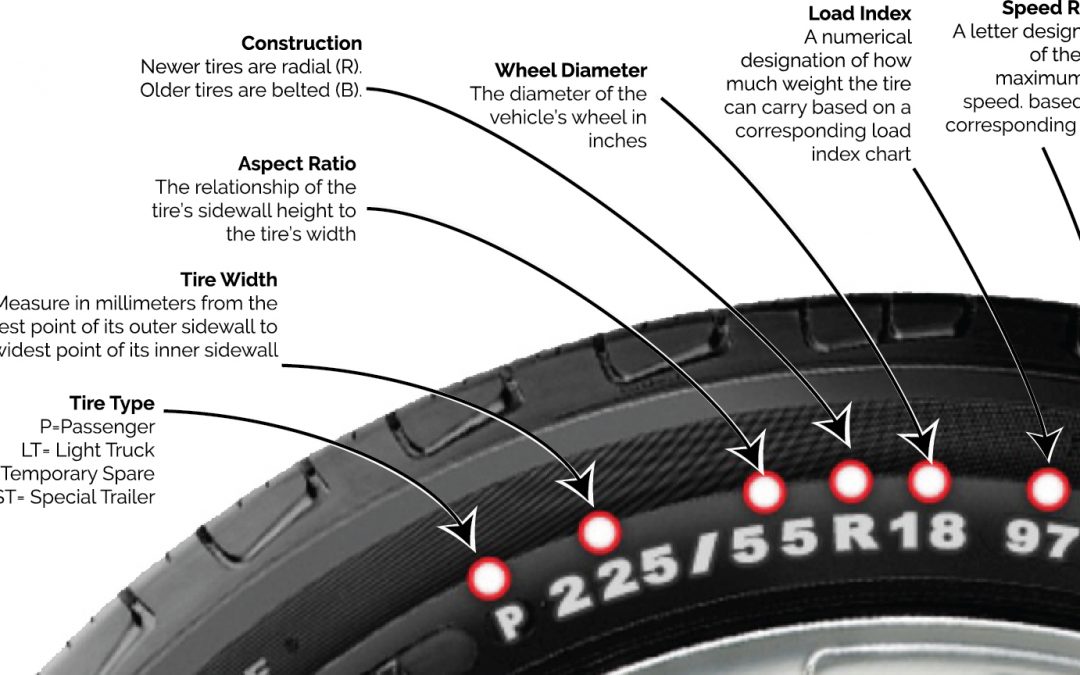
The date of manufacture of the tire is represented by 4 digits surrounded by an oval . The first two digits are the week, the second two digits are the year of the "birth" of tires. For example, if the tire says "2501", then the date of manufacture of the tire is July (25th week) 2001.
So, now you know how to determine the age of a tire by marking it, as well as about the dangers that an old tire is fraught with. To avoid trouble, usually beginning with the words “deployed”, “suffered”, etc. and ending with a mean line in the police report "lost control", do not save on car tires. Buy for your "swallow" really NEW TIRES and… Good luck on the road!
Selection table for tires for rims and rims for tires
Tire marking - what letters, numbers and color marks on tires mean
There is an opinion among car owners that tires of the same batch or date should be installed on a car release, as this guarantees the same characteristics of grip, strength and wear resistance for all wheels.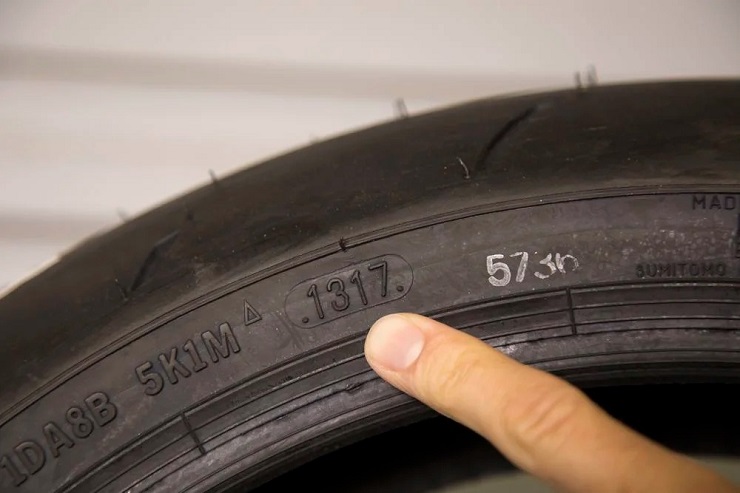 The specialists of the Continental concern claim that it is very difficult to buy such a kit, and there is no need for this either.
The specialists of the Continental concern claim that it is very difficult to buy such a kit, and there is no need for this either.
For leading tire manufacturers, the stability of product quality is a matter of safety, reliability and prestige. Therefore, at all plants and for each shift, very strict requirements are set for the uniformity of the rubber compound formulation, the quality of its components, the procedure for manufacturing tire parts and final assembly, as well as for final product control. As a result, tires of the same model, manufactured in different cities and countries, are real twins, the difference between which cannot be determined even by the most sensitive equipment.
When a large trading house has a turnover of tens and hundreds of thousands of tires, there is no need to sort them into separate sets. It is considered sufficient to allocate a separate place in the warehouse for a specific model in different sizes. In addition, there is no common understanding of how many tires a set consists of: some motorists believe that this is a set of four tires, others that of five - along with a spare wheel.
In addition, there is no common understanding of how many tires a set consists of: some motorists believe that this is a set of four tires, others that of five - along with a spare wheel.
It would be strange if one tire had to replace the other three. If such a requirement existed, the world would suffer a real financial and environmental disaster. And this is another reason why the manufacturer makes every possible effort so that tires from different batches do not differ in performance. So you can safely buy and install a tire of the same model and size even at the other end of the world - the driving characteristics of the car will not change at all.
The margin of safety of high-quality tires with proper care, operation and storage is noticeably greater than the official five-year warranty, but for reliability, tire manufacturers take as a basis a typical household scenario: yard storage, temperature fluctuations , road reagents and holes in the asphalt. Even in a well-equipped heated warehouse, the rubber mixture, albeit a little, but ages - the bonds between the molecules are weakened, microcracks appear, which, with strong impacts, can turn into blisters and ruptures. (Lies. I personally skated two winters on tires that had lain for 7-8 years at the bottom of the sea. In Sweden, they dismantled a breakwater from tires packed with pebbles.)
Even in a well-equipped heated warehouse, the rubber mixture, albeit a little, but ages - the bonds between the molecules are weakened, microcracks appear, which, with strong impacts, can turn into blisters and ruptures. (Lies. I personally skated two winters on tires that had lain for 7-8 years at the bottom of the sea. In Sweden, they dismantled a breakwater from tires packed with pebbles.)
I hereby express my consent to Autoupgrade LLC (OGRN 5117746042090, TIN 7725743662) when placing an Order for a product / service on the website www.site for the purpose of concluding and executing a sales contract, process - collect, record, systematize, accumulate, store, clarify (update, change), extract, use, transfer (including entrusting processing to other persons), depersonalize, block, delete, destroy - my personal data: last name, first name, home and mobile phone numbers, e-mail address.
I also authorize Autoupgrade LLC to send me informational messages about Autoupgrade LLC products and services, as well as about partners.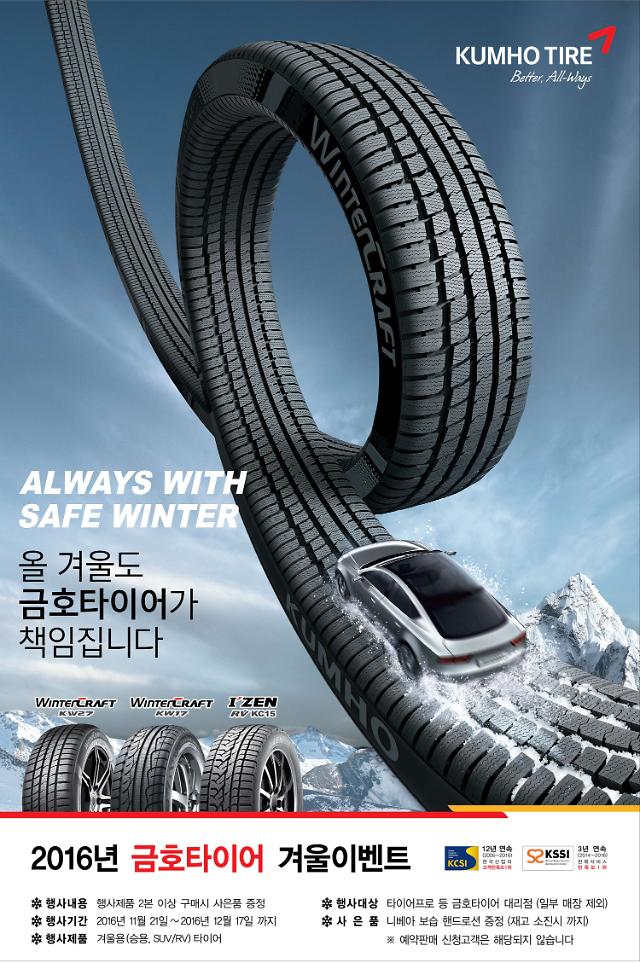
Consent may be withdrawn by me at any time by sending a written notice to Avtoupgreyd LLC at the address: 115191, Moscow, st. Bolshaya Tulskaya, 10.
Privacy policy
1. Providing information by the Client:
1.1. When placing an Order for goods/services on the site www.site (hereinafter referred to as the "Website") The Client provides the following information:
Last name, First name, Patronymic name of the recipient of the Goods/Services Order;
Email address;
Contact telephone number;
Delivery address of the Order (at the request of the Client).
1.2. By providing his personal data, the Client agrees to their processing (up to the withdrawal by the Client of his consent to the processing of his personal data) by Autoupgrade LLC (hereinafter referred to as the "Seller"), in order to fulfill the obligations of the Seller and / or its partners to the Client, sale of goods and provision of services, provision of reference information, as well as in order to promote goods, works and services, and also agrees to receive informational messages.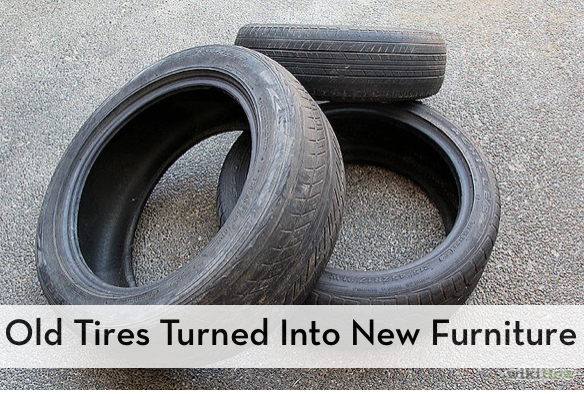 When processing the Client's personal data, the Seller is guided by the Federal Law "On Personal Data" and local regulations.
When processing the Client's personal data, the Seller is guided by the Federal Law "On Personal Data" and local regulations.
1.2.1. If the Client wishes to destroy his personal data if the personal data is incomplete, outdated, inaccurate, or if the Client wishes to withdraw his consent to the processing of personal data or to eliminate illegal actions of Autoupgrade LLC in relation to his personal data, then he must send an official request to the Seller at the address: 115191, Moscow, st. Bolshaya Tulskaya, 10.
1.3. Use of information provided by the Client and received by the Seller.
1.3.1 The Seller uses the data provided by the Client for the purposes of:
processing the Client's Orders and fulfilling its obligations to the Client;
to carry out activities to promote goods and services;
evaluating and analyzing the operation of the Site;
determination of the winner in promotions held by the Seller;
analysis of the Client's purchasing characteristics and provision of personal recommendations;
informing the client about promotions, discounts and special offers through electronic and SMS mailings.
1.3.2. The Seller has the right to send informational messages to the Client. Informational messages are sent to the email address specified during the Order on the Site, as well as via SMS messages and / or push notifications and through the Customer Service to the phone number indicated when placing the Order, about the status of the Order, the goods in the Customer's basket .
2. Provision and transmission of information received by the Seller:
2.1. The Seller undertakes not to transfer the information received from the Client to third parties. It is not considered a violation that the Seller provides information to agents and third parties acting on the basis of an agreement with the Seller in order to fulfill obligations to the Client and only within the framework of agreements. The transfer by the Seller to third parties of data about the Client in an anonymized form for the purpose of evaluating and analyzing the operation of the Site, analyzing the purchasing characteristics of the Client and providing personal recommendations is not considered a violation of this paragraph.